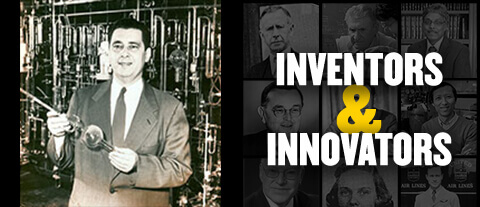February 23, 2018
Inventors & Innovators: Herbert Brown

Purdue graduates, faculty and staff continue to develop innovations and breakthroughs that help move the world forward. Purdue Today will highlight these inventors and innovators by featuring two each month in the Purdue Today newsletter and on social media.
Today, we are featuring Herbert Brown.
Brown was one of the leading American chemists of the 20th century. His Nobel Prize-winning work with boron compounds revolutionized synthetic organic chemistry.
His discoveries at Purdue opened entirely new avenues in both academic and industrial chemistry. Boranes are now used in the synthesis of many organic compounds, including medications such as the antidepressant Prozac and the cholesterol-lowering drug Lipitor. Brown came to Purdue in 1947. During the late 1950s, he and his students discovered that unsaturated organic molecules can be readily converted to organoboranes through hydroboration reactions, in which boron and hydrogen add to multiple bonds.
He supervised a very large group of graduate students and postdoctoral researchers -- most notably Ei-ichi Negishi and Akira Suzuki, 2010 Nobel laureates who studied with Brown in the 1960s. Brown retired in 1979 but continued to be an active researcher until his death in 2004.
For more on Brown, visit the Inventors & Innovators website.
The Inventors & Innovators website contains Purdue alumni from business and industry; technology; medicine and health; and the food and consumer industries.

